Legacy enterprise software presents a significant challenge for companies trying to keep up with the digital marketplace's rapid changes. In fact, over 70% of top execs report that "technical debt" is slowing their IT response time to market trends. Despite this, IT spending surged by 12.7%, it's clear: the time to modernize is now.
In this article, we'll explore 12 key dos and don'ts that are crucial for navigating the complexities of enterprise software design in 2024, ensuring your enterprise software architecture is both resilient and adaptable, ready to meet future market demands and technological advancements.
What is enterprise software design?
Enterprise software design involves creating complex, scalable applications tailored to the broad operational needs of global organizations. These systems prioritize security, integration, and user-friendly interfaces to support efficient business processes and data management across large-scale enterprises. The goal of enterprise software is generally to improve efficiency, streamline processes, and facilitate decision-making.
Enterprise software can be broken down into several categories, including customer relationship management (CRM) tools, enterprise resource planning (ERP), HR management software, supply chain management applications, and enterprise mobility solutions.
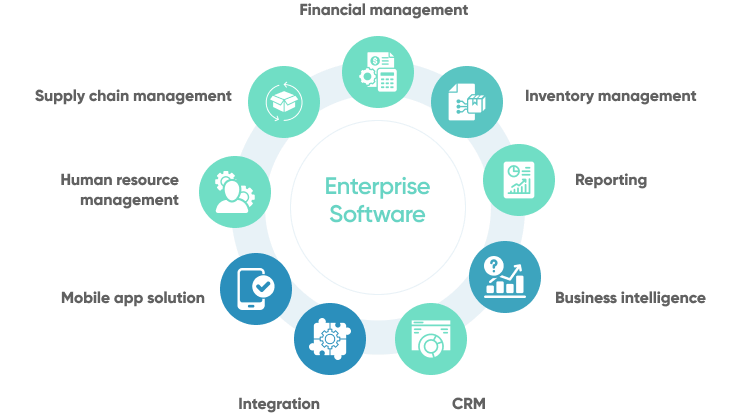
What makes enterprise software design challenging?
Enterprise software design stands apart from other software development due to its unique challenges shaped by the intricate and large-scale nature of enterprise environments. The complex organizational structures and procedural demands of these environments create a distinct set of challenges for development teams. Some of the key factors that make enterprise software development particularly demanding include:
- Scale and complexity: Enterprise software solutions are required to manage substantial volumes of data and accommodate intricate organizational workflows.
- Integration with legacy systems: Effective enterprise applications must ensure seamless integration with a variety of legacy systems and third-party services through diligent compatibility and interoperability efforts.
- Longevity requirements: Enterprise software, designed for longevity, requires strategic planning to support future upgrades and functionality enhancements without necessitating extensive overhauls.
- Robust security and access needs: Enterprise applications must incorporate robust security protocols and a sophisticated user access management system to safeguard sensitive information and precisely control data access.
Enterprise Software Design - Do’s
Navigating the unique challenges of enterprise software design requires a distinct set of strategies. In this section, we'll outline six critical approaches that are essential for the successful design of enterprise software:

Focus the design around business workflows
When launching a new enterprise software project, it is crucial for the team to prioritize the core processes and workflows that the software is intended to enhance. This entails identifying the key business workflows that the software will support and understanding the stakeholders and users involved in these processes.
By delineating the roles and interactions within these workflows, the enterprise software development team can gain clarity on the functional requirements and user needs that must be addressed in the software design.
Questions to ask in an effort to focus the design around business workflows:
- Which specific business workflows will undergo transformation due to the introduction of this new software?
- Besides the directly impacted workflows, which processes might experience peripheral effects, requiring minor adjustments, new data access points, or integrations?
- What are the fundamental steps constituting each workflow, and how do they interrelate?
- Who are the primary users and stakeholders involved at each stage of the workflow, and what are their respective roles and responsibilities?
- What specific data access, modification, or other actions are necessary at each stage of the workflow to facilitate seamless operation and optimal functionality?
PRO TIP: One of the best ways to get an understanding of the relevant business workflows is to create what’s called a process map. Creating a process map not only visually represents the sequence of actions and decision points within a workflow but also highlights areas of redundancy and inefficiency that can be optimized in the new software system design.
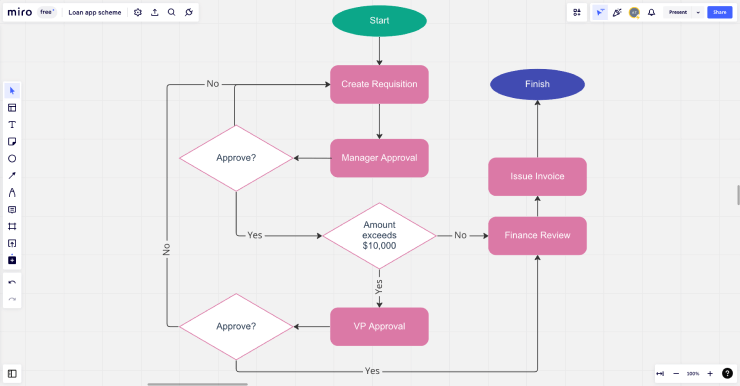
Read More: 6 Steps to Maximize the ROI of Business Process Improvements
Observe and interview users
To ensure the effectiveness of enterprise software, it's essential to integrate user observations and interviews into the requirements gathering process. These techniques are key for aligning the software design with user needs and achieving meaningful business impact.
Here’s how you can effectively gather direct user input:
- Uncover hidden pain points through observation: Observing users in action, especially when they are interacting with current solutions or manual processes, can be incredibly revealing. This approach helps the development team identify subtle inefficiencies and nuances in how users actually use the tools versus how they are intended to be used. These observations can uncover hidden pain points and opportunities for significant enhancements in the new software.
- Validate assumptions through interviews: Conducting interviews with key stakeholders and users involved in the business workflows is critical. These discussions can validate the design team’s assumptions and hypotheses, ensuring software solutions are built around user needs and behaviors. Interviews can provide deep insights into what users value most, which features are essential, and how the software can improve their daily tasks.
- Gather quantitative insights through surveys: Surveys are another effective tool for collecting user input. They provide quantitative data that can be analyzed to identify trends, preferences, and areas for improvement. Surveys can help quantify the significance of the problems observed and the potential impact of proposed solutions, allowing for data-driven decision-making in the design process.
PRO TIP: Consider using Usersnap to streamline feedback collection during the enterprise software design process. This tool enables real-time, contextual feedback directly within the application, facilitating quick identification and resolution of user issues and enhancing the overall development workflow.
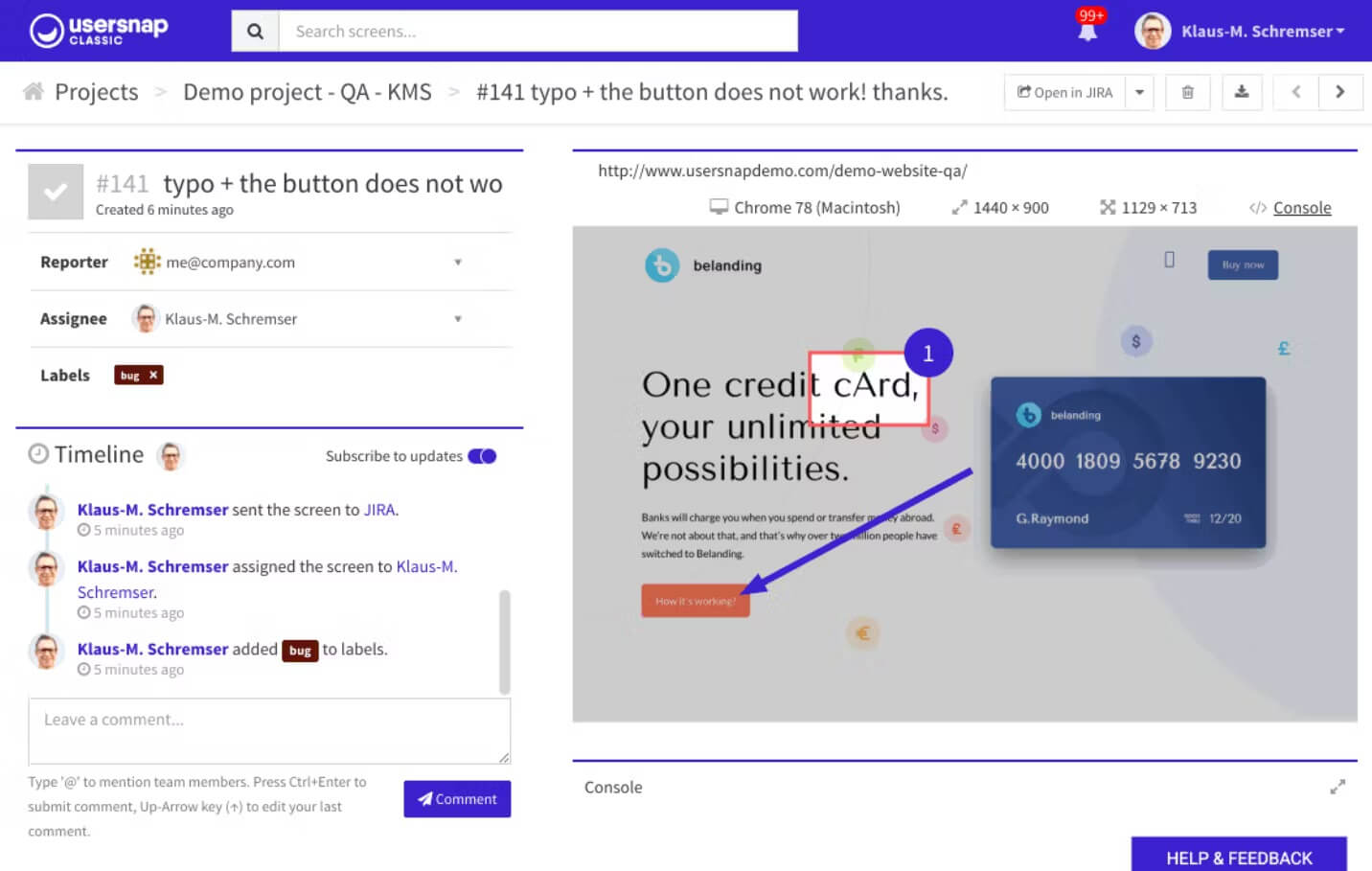
Read More: 10 Powerful Techniques for Better Agile Requirements Gathering
Involve business workflow owners in the design
Involving business workflow owners in the software design process is crucial for developing solutions that not only align with organizational objectives but also mesh seamlessly with the day-to-day realities of operations.
These stakeholders bring a deep understanding of their respective areas, offering insights that go beyond what can be captured through interface design or data analysis alone. By integrating their firsthand knowledge and experience, the design process benefits in several significant ways:
- Offer insights that extend beyond surface-level observations, providing a deeper understanding of the intricacies and nuances of operational processes.
- Proactively identify and address potential risks and challenges before they escalate, fostering a culture of risk awareness and mitigation.
- Enable design teams to optimize processes for efficiency, reducing waste and improving overall operational performance.
- Foster a sense of ownership and collaboration, leading to greater stakeholder buy-in and support for the resulting software solution.
Aim to achieve business process improvements
We’ve discussed centering your design around business workflows. The more you understand about the workflows, the more effective the team will be at making process improvements. Consider your overall goals for the new software (or business process improvement in general).
Align these goals to specific KPIs, so you can continuously measure and analyze the results of your process improvements. This iterative approach—measuring, analyzing, refining, and measuring again—ensures that your software evolves in alignment with your business goals and delivers sustainable long-term success. Let’s look at a few examples:
| Goal | KPI |
|---|---|
| Improve the quality of end deliverables |
|
| Eliminate waste |
|
| Reduce processing time |
|
| Save money by adding automation or reducing inefficiencies |
|
Save time with pre-built UI design components
Utilizing ready-to-use UI elements from a component library can significantly enhance your approach to designing enterprise software products. These components, aligned with established architectural patterns, form the structural foundation of your application's interface, streamlining the software development process and elevating the end-user experience. Here are the key benefits:
- Efficiency: Pre-built UI components accelerate development by eliminating the need to create every element from scratch. This allows your team to concentrate on developing distinctive features and functionalities that set your product apart.
- Cost-effectiveness: With faster development comes reduced labor costs. Leveraging a UI component library can be especially economical, helping you manage design resources more efficiently.
- Consistency and quality: Using standardized user interface elements ensures a uniform look and feel throughout your application, which can greatly enhance user satisfaction. These components are generally well-tested and high-quality, minimizing the risk of bugs and contributing to the stability of your software.
Adopt an iterative approach to design
In enterprise software development, adopting an iterative approach to design is crucial. The essence of the iterative design is to start validating ideas early. High-fidelity mockups, often created using tools like Figma, play a vital role in this process. These mockups provide a detailed and interactive representation of the final software versions, allowing for thorough user testing before any code is written.
By conducting detailed user testing scenarios with a series of testers interacting with these high-fidelity mockups, several benefits can be realized:
- Early identification of problems: Testing helps in pinpointing areas where users might struggle or misunderstand the functionality, allowing these issues to be addressed before development begins.
- Cost efficiency: It is far less expensive to make design adjustments during the mockup phase than to rework the application once it has been developed. Early problem identification saves significant resources and development time.
- Focus on design first: Allowing designers to iterate their designs based on user feedback before handing off to developers ensures that many potential issues are resolved upfront. This focus on pre-development design iteration is both cost-effective and essential for creating a user-centric product.
Enterprise Software Design - Don’ts
As we've explored the crucial "dos" of enterprise software design, it's essential to also recognize the pitfalls to avoid. Transitioning from what to embrace, we now shift our focus to what to steer clear of.

Fail to control the data architecture effectively
Enterprise data systems are inherently complex, often consisting of multiple layers of interdependent data sources and services. When developing new enterprise software, controlling the data architecture is crucial for seamless integration into the broader tech stack. Without careful oversight, the data architecture can become fragmented, leading to inconsistencies and integration challenges that compromise scalability and operational efficiency.
Effective collaboration between developers and system architects is key. One practical method to enhance this collaboration is by employing a detailed checklist to ensure new features integrate seamlessly without disrupting the existing data framework.
Key questions to consider include:
- How will each new feature impact the current data structure?
- What additional design considerations are necessary, given the existing architecture?
- Do any design elements conflict with current user interactions?
- Will the integration of new features affect any external services?
Ignore software adaptability to future demands
Enterprise software systems are typically expected to serve organizations for many years—often spanning decades. This longevity necessitates that such systems are not only built to meet current requirements but are also adaptable to future demands and technological advances. Ignoring the need for adaptability can lead to software that quickly becomes obsolete or requires costly and extensive overhauls to remain functional.
To ensure longevity and adaptability:
- Developers should prioritize building systems with modular architectures that can be easily updated or reconfigured. This approach not only simplifies maintenance and upgrades but also enhances the system's ability to integrate new technologies and features without disrupting existing functionality.
- Avoid modern UI design trends that may become outdated quickly. Focus on clean, simple interfaces that are likely to stand the test of time and maintain usability.
- Implement data management practices that can handle growing volumes and changing types of data. This ensures the system remains efficient and scalable, preventing performance bottlenecks as the organization's needs expand.
- Leverage cloud solutions: Utilize cloud solutions to enhance flexibility and scalability. Cloud platforms offer scalable infrastructure that can adapt to increasing data loads and user demands without the need for physical hardware upgrades.
Overlook integration with other systems
For enterprise software seamless integration of web services is not just a convenience—it's a strategic necessity. Effective integrations enhance system efficiency, streamline workflows, and provide critical interoperability between diverse software applications.To ensure that these integrations deliver their intended benefits, it’s essential to adopt a structured approach:
- All planned integrations should be meticulously documented during the requirements gathering phase. This documentation should detail how each integration will function, the data it will handle, and the business processes it will support.
- Integration points must be built and configured during the software development phase. This stage involves detailed technical planning and execution to ensure that integrations are scalable, secure, and efficient.
- Before going live, all integrations should undergo rigorous testing. This testing phase is crucial to validate the functionality of the integrations and to ensure that they operate seamlessly within the larger ecosystem without errors or data integrity issues.
PRO TIP: If you aren’t sure what your integration needs are, an expert software developer, software architect or consultant can help analyze your current enterprise systems and workflows and provide assistance scoping out the requirements for proper integration. It’s very important to build in integrations up-front rather than trying to retrofit a solution after the fact to meet your integration requirements.
Read More: 10-Step Proven API Project Planning Process
Overcomplicate user roles and permissions
Enterprise teams face the challenge of serving diverse end-users, each with unique priorities and workflows. While it might be tempting to create a multitude of user roles and permissions, maintaining simplicity with a few clear, intuitive roles is often more effective for long-term adaptability and process evolution.
To complement this streamlined approach, robust in-app customization options can be offered, allowing users to adjust permission sets, tailor dashboards, and modify interface elements like colors and screen layouts. This strategy balances structural simplicity with individual user empowerment, ensuring the software remains flexible and user-friendly over time.
Sideline quality assurance at any stage
Quality assurance (QA) is not just testing. It’s not something that should be relegated to the end of the project. QA work needs to be a thoughtful, strategic piece of every stage of enterprise application development. By embedding QA processes throughout the development cycle, organizations can mitigate risks, reduce costs associated with post-release fixes, and enhance user satisfaction. A few examples of QA work that could be integrated into the process include:
| Enterprise Software Design Phase | Example QA tasks |
|---|---|
| Requirements Gathering |
|
| Design |
|
| Development |
|
| Testing |
|
| Deployment & Maintenance |
|
Treat onboarding and training as an afterthought
As enterprise companies implement new software solutions, recognizing the critical role of onboarding and training is essential for success. Neglecting these aspects can lead to decreased user adoption, productivity bottlenecks, and dissatisfaction with the software.
To avoid these issues, organizations must integrate onboarding and training into the software design process from the start. Effective strategies include:
- Interactive tutorials and walkthroughs: Designing the software with built-in interactive tutorials that guide new users through the main features and workflows can dramatically enhance the learning curve.
- Role-based training modules: Developing training modules that are tailored to the specific roles and responsibilities of different user groups within the organization ensures that each user receives relevant knowledge. This targeted approach helps users quickly become proficient in the aspects of the software that are most pertinent to their work
- Regular webinars and workshops: Organizing ongoing training sessions, such as live webinars and workshops, allows users to deepen their understanding of the software and stay updated on new features and best practices
Work with an experienced enterprise software team
If you're looking for enterprise software design services, our Enterprise Web Application Development Company will partner with you to build a comprehensive strategy to meet your business needs. We'll assist you in selecting the most suitable technologies, seamlessly integrating them into your existing tech stack, and delivering a user-ready, enterprise software solution.
Conclusion
Successful enterprise software design involves a holistic approach that addresses both technical and business considerations. By implementing the outlined strategies and avoiding common pitfalls, organizations can develop robust enterprise software that enhance operational efficiency and user satisfaction. Partner with an experienced team that understands the nuances of enterprise needs and web services, ensuring your software solution not only meets but exceeds expectations.

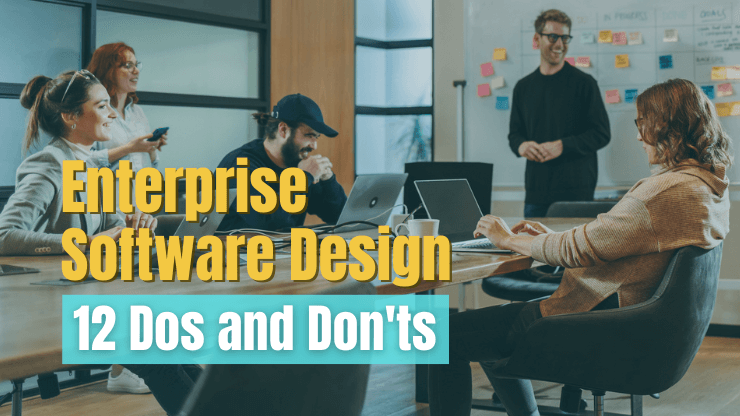
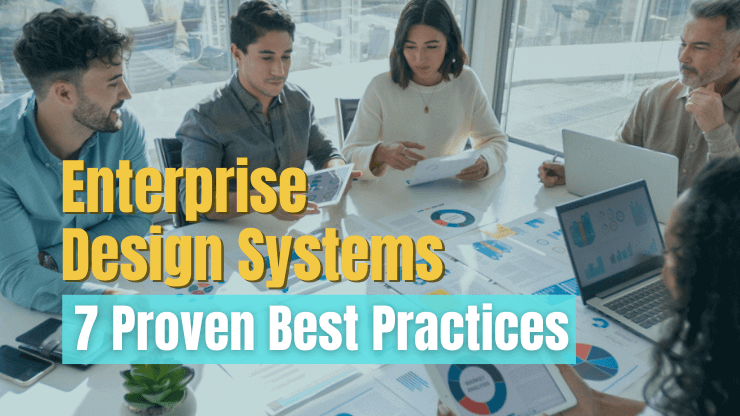


![2024 Guide to ChatGPT Enterprise [Benefits, Risks & More]](/uploads/blog/chatgpt-enterprise/chatgpt-enterprise.png)

